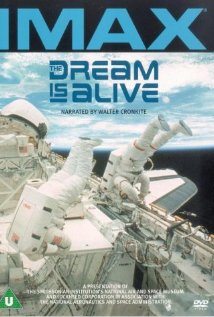Synopsis
The documentary includes scenes from numerous shuttle missions, beginning with the dawn landing of Discovery at Kennedy Space Center's Shuttle Landing Facility upon the conclusion of STS-51-A. A composite shot, the finished sequence is composed of footage from Discovery's landing, radio transmissions from Challenger's 1984 landing on STS-41-B (the first mission to use the SLF runway), and runway approach footage filmed from a fixed-wing aircraft.
Mission STS-41-C, the 11th for the Shuttle program and the fifth for Challenger is featured most heavily, beginning with the deployment of the Long Duration Exposure Facility (LDEF) satellite. The capture and repair of the Solar Max satellite also receives a great deal of coverage, including a detailed overview of training for the mission in a large pool at NASA. This particular mission is of interest, as the first attempt at capturing the satellite failed, and a second attempt almost 12 hours later had to be made. That portion of the mission was a success, with the satellite being brought to the payload bay on the next attempt, and was repaired quickly by astronauts James van Hoften and George Nelson. Other STS 41-C mission activities included a student experiment located in a middeck locker to determine how honeybees make honeycomb cells in a microgravity environment.
Other shuttle missions are interspersed during the feature with the STS-41-C footage. Highlights include:
Additionally, a small amount of time is also dedicated to other aspects of the Space Shuttle program, including:
- Other crew that work on the Shuttle;
- The work of inspecting and replacing the Shuttle's heat tiles;
- Training the astronauts must complete to prepare for missions;
- What the astronauts eat on spaceflights;
- How astronauts would bail out if an emergency occurred on the launch pad.
Release
By 1992, Variety reported that the film had grossed $70 million since its debut translating to $17 million in film rentals in the United States and Canada, the biggest IMAX 70mm film to that date. [1]
The Dream Is Alive was released on LaserDisc three times (twice in the US, once in Japan), DVD (pictured), and in high definition as a bonus feature on the Blue Planet HD DVD and Blu-ray in 2007. [2]
This page is based on this
Wikipedia article Text is available under the
CC BY-SA 4.0 license; additional terms may apply.
Images, videos and audio are available under their respective licenses.

